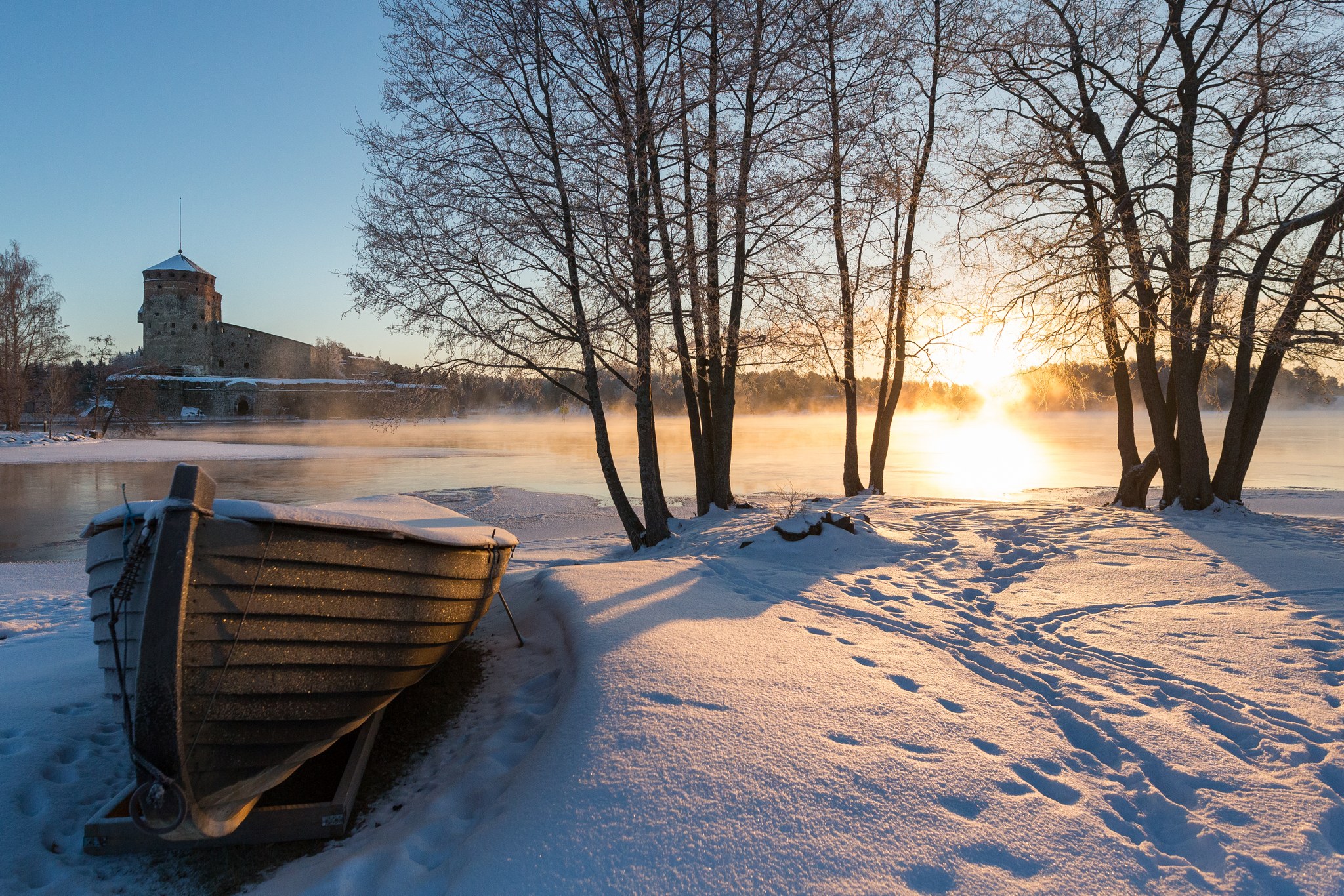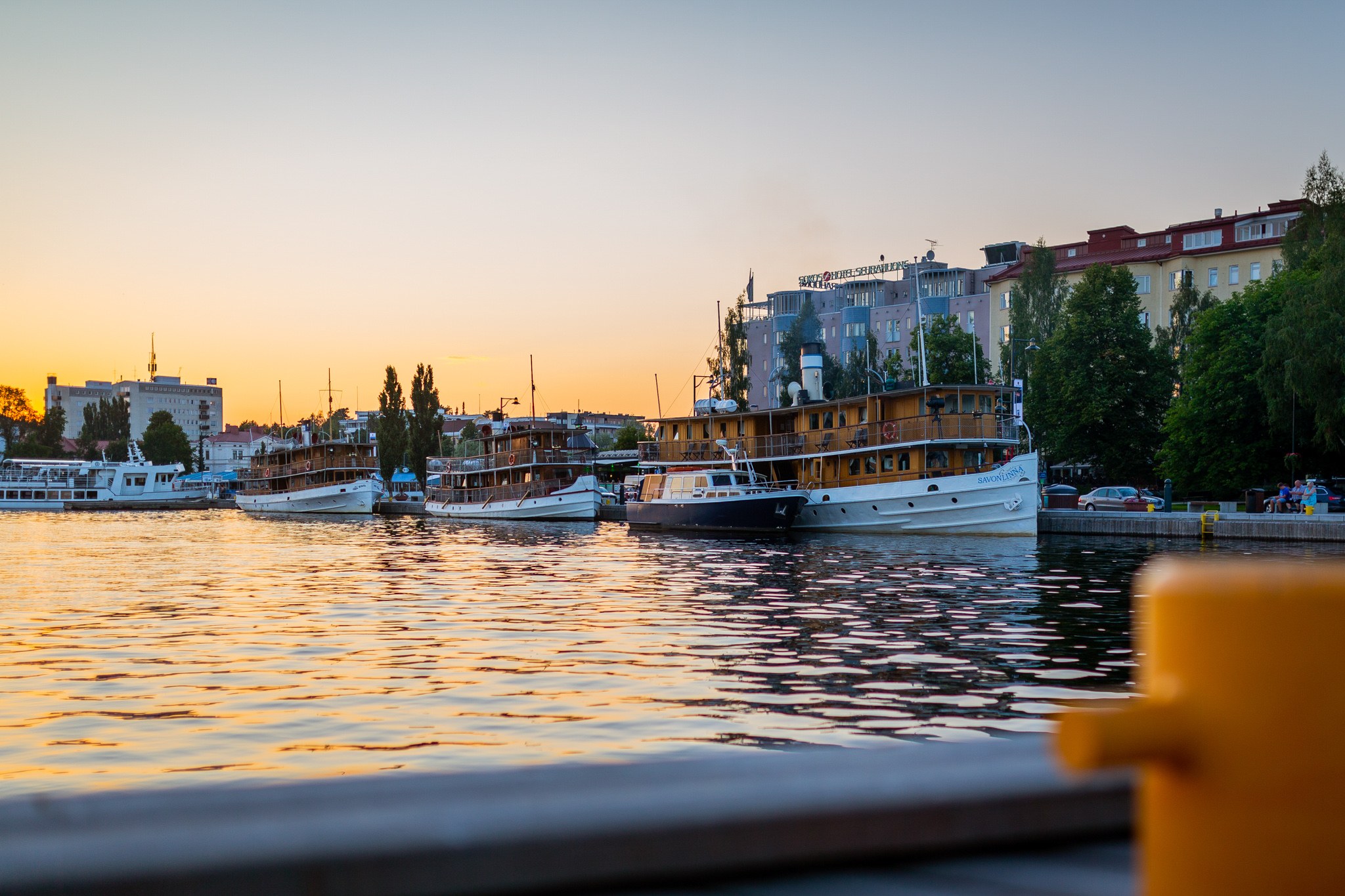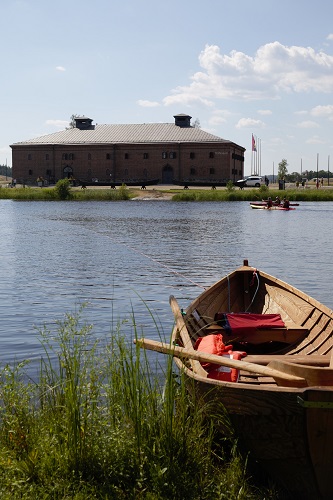Savonlinna, Finland
Develop and expand partnerships into digital media, creative industries and local cultural production and heritage sectors to attract not only tourists but also digital nomads and creative people as full and part-time residents to the city.
Region: South Savo
- VIBRANT CULTURAL HUB OF LAKE SAIMAA
- INTERNATIONAL MEETING POINT OF PEOPLE
- RICH CULTURAL HERITAGE RELATED TO THE LAKELAND ARCHIPELAGO
Type of organisation leading the larger local innovation ecosystem
Public development agency
Savonlinna Development Services Ltd. (SDS) is a development agency owned 100% by the city of Savonlinna and is carrying out project activities with over 15 years of experience on the European level. SDS is a cluster organisation coordinating the cooperation of enterprises in tourism and cultural and creative industries, destination management organizations and cultural heritage institutions in order to promote sustainable development and the livelihood of the area.
Main challenges related to cultural tourism
Savonlinna is a seasonal touristic destination. The strategic goal is to make it an all-year-round cultural destination with events, cultural attractions and activities attracting significant domestic and international tourists during spring, summer, autumn, Christmas and winter. We are making an effort to connect to new audiences with the help of user-driven and responsive design of services.
For Savonlinna, Circular Cultural Tourism means capacity building for the renewal of the regional tourism ecosystem so that it sustains and regenerates the region's social, cultural and ecological assets by protecting the Lake Saimaa environment reinvigorating our communities.
Current strategic planning
- The aim is to develop and expand partnerships into digital media, creative industries and local cultural production and heritage sectors to attract not only tourists but also digital nomads and creative people as full and part-time residents to the city.
- The approach to destination management is to significantly increase the inclusion of stakeholders and small and medium-sized enterprises in tourism and creative industries as well as improve the usage of data and knowledge management for building a competitive regional tourism cluster
Ideas and future perspectives
We aspire to increase the inclusion of local inhabitants and attract enterprises and professionals with innovation capacity to the city in order to create new types of cultural experiences. We are looking into possibilities for revitalising the historical castle and Riihisaari museum with augmented reality experience targeted especially to the young. Private investments in event arenas in the city have significantly contributed to the development of the events industry. A successful local brewery Olaf Brewing has starting operation of events arena House of Olaf that can be developed as a venue for diverse events. In 2022 Savonlinna is launching the development of Finnish national urban park as a platform for cultural activity (approved by the Ministry of the Environment 30.9. 2021.). The expected nomination of Lake Saimaa as UNESCO World Heritage site for natural heritage is expected provide rich new inspiration also for cultural production in the city.
Savonlinna is looking for innovative strategies to develop the historic ensemble of St. Olav’s castle (Olavinlinna, est. 1475) and Savonlinna Museum Riihisaari site as a hub and gateway of cultural tourism in the Lake Saimaa area. In order to increase the number of visitors and even out seasonal variation, new types of attractions, events, and cultural content need to be designed to cover different times of the year and utilise the opportunities provided by these environments. Savonlinna is looking into possibilities of establishing UNESCO World Heritage site visitor center in the environment of Riihisaari. Circular economy goals will be realised through the user-driven development or services valorising and re-creating cultural heritage in different representations also in the digital form. The social, human-centred dimension also means that the historic ensemble will be developed as an open platform for different types of cultural production reflecting different meaning for participant groups. It is intended that youth in the age category 15-25 years and families with children would be the prime target groups for new services.
Cultural heritage asset description
St. Olav’s castle (Olavinlinna) and Savonlinna Museum Riihisaari
These two heritage assets are an example of shifting borderland between East and West, i.e. Kingdom of Sweden and Russia since the middle ages. Riihisaari museum is a window to the way of life in the Lake Saimaa archipelago, the biggest lake in Finland and the 4th largest lake in Europe. St. Olav's castle is also the venue of the Savonlinna Opera Festival that belongs to the category of the five most prestigious opera festivals in the world.
Type of cultural heritage
- INTANGIBLE
- RURAL
- NATURAL
Specific goal related to the selected asset
Savonlinna is looking for innovative strategies to develop the historic ensemble of St. Olav’s castle (Olavinlinna, est. 1475) and Savonlinna Museum Riihisaari site as a hub and gateway of cultural tourism in the Lake Saimaa area. In order to increase the number of visitors and even out seasonal variation, new types of attractions, events, and cultural content need to be designed to cover different times of the year and utilise the opportunities provided by the environments. Circular economy goals will be realised through the user-driven development or services valorising and re-creating cultural heritage in different representations also in the digital form. The social, human-centred dimension also means that the historic ensemble will be developed as an open platform for different types of cultural production reflecting different meaning for participant groups. It is intended that youth in the age category 15-25 years and families with children would be the prime target groups for new services.
Europeanisation: linkages between local heritage and European history and culture
St.Olav’s castle is an example of shifting borderland between East and West, i.e., Kingdom of Sweden and Russia since the Middle Ages. Riihisaari museum is a window to the way of life in the Lake Saimaa archipelago, the biggest lake in Finland and 4th largest lake in Europe. St. Olav's castle is also the venue of Savonlinna Opera Festival belongs to the category of five most prestigious opera festivals in the world and which is cooperating e.g., with La Scala, Milan and many other most prestigious opera venues. Thus, the site is in renowned and unique focal point of European culture and history.
European and international Cultural Heritage recognition(s)
- In the process of developing the site as a node of European Cultural Route(s) (St. Olav Ways, possibly Prat-cart prehistoric rock art trail (Riihisaari Museum).
- In preparation for applying for European Heritage Label. Needing innovation and fresh outlooks to develop the application.
- Lake Saimaa Ringed Seal Archipelago is on the tentative national list for UNESCO World Heritage nomination (expected in 2025), with a tentative visitor centre located on the site.
Ongoing projects and best practices
- The sustainable "Lake Saimaa Purest Finland" brand for Lake Saimaa area including 5 cities and 2 regions. Through Lake Saimaa cooperation, they are committed to sustainable tourism and, with the support of Visit Finland, launching ecolabels and responsible practices in tourism companies.
- Together with Metsähallitus they are developing sustainable nature tourism according to their guidelines in two national parks in Savonlinna and Punkaharju national landscape protection area, also located in Savonlinna.
- Saimaa Ilmiö 2026 bid for ECoC. Building of wider CCI networks and cooperation. Bid failed, but we intend to develop and utilize established networks.





